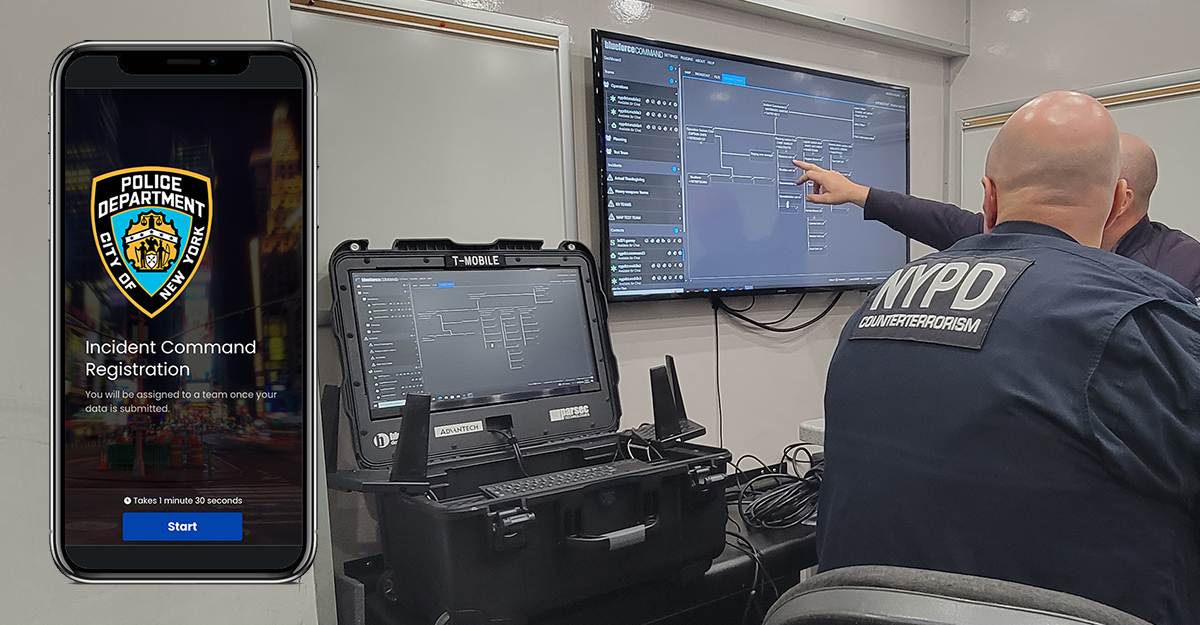
Virtual ICS Checkin: New Capability for Adaptive ICS Module for BlueforceCOMMAND
The Incident Command System (ICS) is a standardized, on-scene, all-hazards incident management concept. It was developed in the 1970s by firefighting agencies in the United States as a means of effectively managing incidents involving multiple agencies and organizations. The ICS provides a common structure and terminology for incident management and is designed to be scalable, so that it can be used for incidents ranging from small, single-agency events to large, complex, multi-jurisdictional incidents. The ICS approach has been proven effective in managing a wide range of incidents, including active shooter, mass casualty incidents, natural disasters, public health emergencies, and large-scale law enforcement events. Its use is now widely recognized and required by law in many countries. The ICS has become an international standard for incident management and is used by organizations and agencies around the world.
Step one during emergency events that leverage ICS is responder check-in with the Incident Command function. With most incidents, this is a straightforward process, but with large scale, multi-jurisdictional events, many problems quickly surface. Consider active shooter events: Hundreds and in some cases thousands of emergency responders from different agencies and jurisdictions have rushed to the scene to provide aid and support. However, the sudden influx of personnel and vehicles cause a crush at the incident command function as they attempt to notify they are there and bringing specific resources. This crush can create several problems:
- First, a large number of responders and vehicles make it difficult for incident commanders to get a clear understanding of resources on the ground, as they are all trying to rush the Command Post indicating availability of human and other resources brought to the incident.
- Second, the volume of incoming support: Blueforce heard this loud and clear when a Deputy Commissioner of a major U.S. police department described an influx of more than 2000 responders (police, EMS, and rescue) who rushed to the scene of a recent active shooter incident in a subway system, but there was no way to account for all of the capability brought to the scene, much less ensure all could check in.
- Finally, the crush of responders also makes it difficult to access the affected area, which slows down the ability to provide aid and support to those in need. Additionally, the large number of vehicles creates gridlock on the roads, making it difficult for emergency vehicles to reach the scene.
As part of our new Adaptive ICS Module, Blueforce has created a capability that allows departments and incident commanders to manually, or autonomously, send email and SMS messages with links for responders to “checkin” using a Blueforce webform. This capability can be exposed using QR codes and/or links. On scan or click of a link on a responders mobile device allows them to self-register with the Incident Command Post. Registrations are automatically ingested into BlueforceCOMMAND and can then be assigned to a function, or, can be dynamically responded to via email or SMS thanking them, but informing them the incident is properly staffed and they are free to return to their “home” base. As well, on assignment to a responder team or ICS function, BlueforceCOMMAND autonomously sends the responder their assignment via SMS or email, thereby minimizing the number of people in and around the command post.
Overall, effective resource check-in is crucial for effective incident management, as it helps ensure that resources are being used effectively and efficiently, and that accountability is maintained throughout the incident. To learn more about the Blueforce Adaptive ICS Module for BlueforceCOMMAND or our new Remote ICS Registration capability, send an email to info@blueforcedev.com or call us at +1 866-960-0204.


